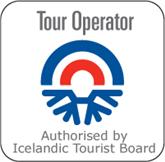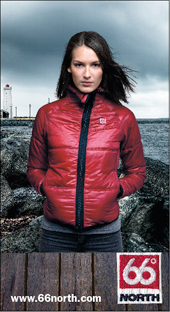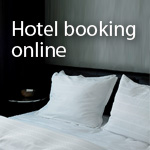Middle East in 2011
Lebanon picture gallery
Syria picture gallery
Jordan picture gallery
Lebanon, Syria, Jordan, Israel and the West Bank. February 2011.
An outline of the travel story
The trip was to some extent inspired by the 2010 trip to Israel and neighbouring countries (see article about Israel 2010). The author,, managing director of the Visitor's Guide and NETID consultancy, wanted to see more of the Arab countries this time. The trip lasted about three weeks and involved the crossing of three borders in the Middle East (each taking from 45 - 75 minutes to cross). I started by taking a flight to London with Icelandair and travelled from there to Beirut with the airline BMI. Upon arrival I spent four days in Lebanon. I then left Beirut with a so called shared taxi (a taxi where up to four people travel together) to Damascus in Syria. After four days in Damascus the course was set for Amman in Jordan where I stayed for three days before leaving for Israel, crossing the border at King Hussein’s bridge. Two days later I was joined by my friend Helgi and together we spent another week in Israel, finishing in Tel Aviv. From there we flew to Copenhagen with the low cost airline Cimber air and, after spending one night at hotel Absalon Annex - which is worth recommending, we returned to Iceland with Icelandair.
Let us begin with the weather which is usually of special interest to North European readers. The temperature ranged from approximately 13-24° Celsius during the day, dropping to 10-14° Celsius during the night. The lowest temperatures were in Amman,Jordan which is approx 800 meters above sea level while the highest ones were in Tel Aviv.
In these countries, various religions exist in relative harmony. The tolerance shown by people of different faiths is particularly evident in Syria which has a 16% Christian population. The appearance of people, especially the women, differs widely. Some have a a European look, others are covered with a veil and traditional Arabic dresses and one can find everything in between. Many Arabs have blue or green eyes and fair skin. Those who work outdoors naturally tend to be darker in appearance. Another thing worth mentioning is that, with the possible exception of Lebanon it feels quite safe to travel in these countries. Damascus seemed surprisingly good in this respect., better than most European cities.
A slight drawback, very noticeable in those Arab countries, is that all the men seem to be smoking everywhere, whether in homes, cars or restaurants. After noticing this, I made a point of trying to find an Arabic non-smoker. The result of my search is described later in this article. Another rather amusing characteristic is the way people respond when asked for directions. A local will typically point in the appropriate direction and say that your destination is 5 minutes away. After walking 10 minutes, the next person will point in the same direction and say it is only 5 minutes away:)
In the Arabic countries, one is very often asked which country one comes from. This is especially true of Jordan and Syria. The response is usually followed by a heartfelt "welcome". When I said I was from Iceland, people usually asked "isn't it very cold there?". The name of the country naturally conjures up the image of a really cold place. When told what the wintertime temperatures are really like, people were often very surprised.
In the following, an asterisk (*) means that a picture of the person or place can be found in the photo album.
On my trip, I met many Palestinans who live all over the Arabic countries, whose forefathers left Israel/Palestina after the war in 1948 or after the six day war in 1967.
Lebanon (Area 10,400 sq km / population 4 million):
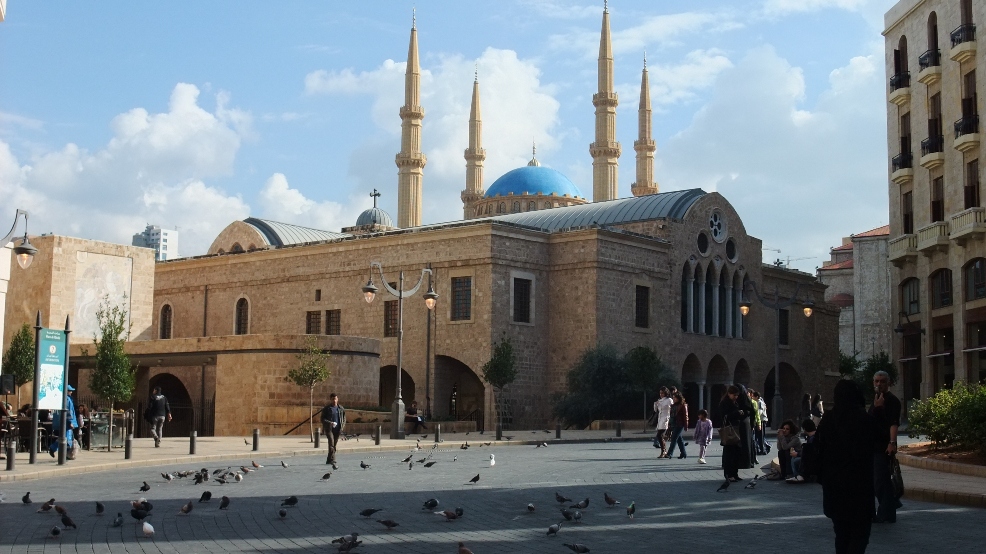 The trip started in Lebanon where I spent four days, the first two days in Beirut at a hotel – the name of which I have forgotten and would not recommend in any case because of the general lack of cleanliness and professionalism. I had a look around the city, which was somehow less interesting than I had imagined. I walked downtown, visited the seaside and drove through the Hezbollah quarter. This quarter looked very different from other neighbourhoods . One could see some remains of the war with Israel in 2006, and the women wore a veil unlike those seen in the city centre. I rented a car with two boys I had met at the hotel. One was a local guy by the name of , Hassan (who later tried to steal most of my valuables) and an American* whom I just called the Gringo. We drove 60 km south to a rather uninteresting village which was the hometown of Hassan, and also north to Byblos* where there were some ancient ruins. Thereafter we went to Jubila beach and stayed in Hotel King Edward, close to a red-light district. As a consequence, some dancing girls came to the hotel for certain side projects escorted by gentlemen. We made the acquaintance of a nice night guard by the name of Tony who was the agent for those side projects. However, we declined his friendly offer to have some of his girls. Near the hotel was the biggest casino in Middle East. I made a visit there as a non- gambler, and found a heavy smoke to be its most notable feature. I left Beirut in a shared taxi for the bargain price of 20 dollars and headed for Damascus in Syria.
The trip started in Lebanon where I spent four days, the first two days in Beirut at a hotel – the name of which I have forgotten and would not recommend in any case because of the general lack of cleanliness and professionalism. I had a look around the city, which was somehow less interesting than I had imagined. I walked downtown, visited the seaside and drove through the Hezbollah quarter. This quarter looked very different from other neighbourhoods . One could see some remains of the war with Israel in 2006, and the women wore a veil unlike those seen in the city centre. I rented a car with two boys I had met at the hotel. One was a local guy by the name of , Hassan (who later tried to steal most of my valuables) and an American* whom I just called the Gringo. We drove 60 km south to a rather uninteresting village which was the hometown of Hassan, and also north to Byblos* where there were some ancient ruins. Thereafter we went to Jubila beach and stayed in Hotel King Edward, close to a red-light district. As a consequence, some dancing girls came to the hotel for certain side projects escorted by gentlemen. We made the acquaintance of a nice night guard by the name of Tony who was the agent for those side projects. However, we declined his friendly offer to have some of his girls. Near the hotel was the biggest casino in Middle East. I made a visit there as a non- gambler, and found a heavy smoke to be its most notable feature. I left Beirut in a shared taxi for the bargain price of 20 dollars and headed for Damascus in Syria.
Syria (185,180 sqm / 20,5 millions):
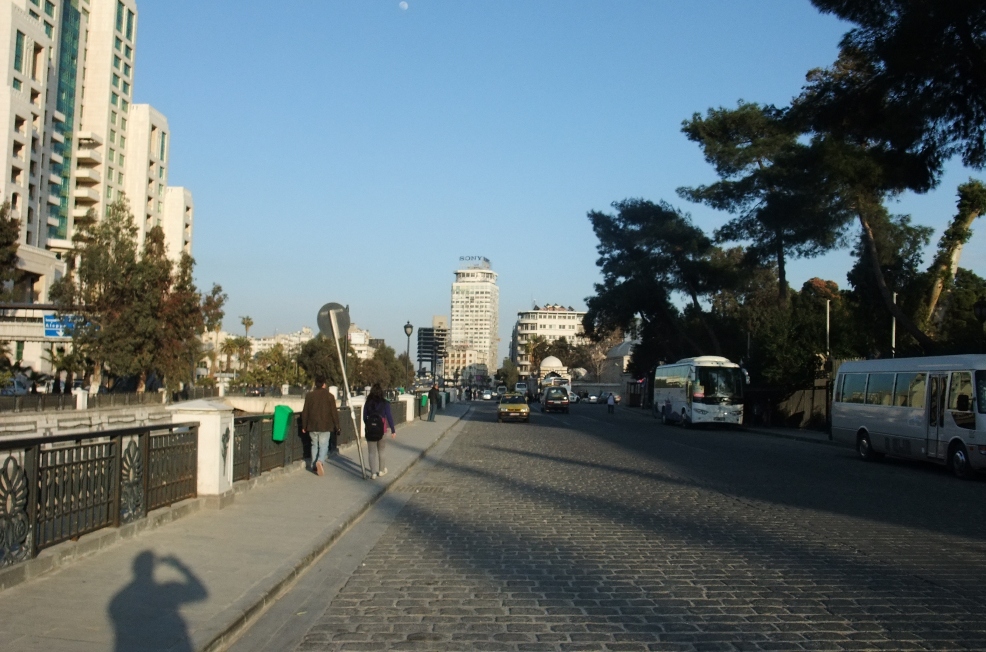 Arriving in the late afternoon in Damascus after a 3.5 hour journey, I was pleased to notice that people where very friendly and helpful when asked for directions, even offering telephones to make calls. Syria is very much a desert and feels somehow backward. Damascus the capital has some 4,6 millions inhabitants. The old city has both a Muslim and a Christian quarter. I stayed in the “Damascus” hostel in the old city. This is a nice hostel with helpful staff, where coffee and tea is always available. I walked around in the old city, visited some restaurants, bazaars, had a haircut and shave* and strolled around in the city center. The hostel offered some tours in a shared taxi for their customers. Through the 2 tours I made I got to know some local people and fellow travelers. One tour was to the village Maalula, an hour’s travel away, where they have one of the oldest churches in the world*. Here you can still find people who speak Aramaic, the language of Jesus Christ. On the last day I went with two Britons on a trip to the Golan heights in Syria*, which were also within an hour’s drive. It was interesting to see the remains of the 1967 war, when Israelis captured the Golan heights including the town Quneitra which was destroyed at that time. Wherever one drives in Syria there are pictures of the president Bashar al-Assad on big posters* and in all official buildings and many homes. People seem to like and respect Assad, some out of fear perhaps. The turmoil in the middle East has now (in april 2011) reached Syria, mainly the southern part.
Arriving in the late afternoon in Damascus after a 3.5 hour journey, I was pleased to notice that people where very friendly and helpful when asked for directions, even offering telephones to make calls. Syria is very much a desert and feels somehow backward. Damascus the capital has some 4,6 millions inhabitants. The old city has both a Muslim and a Christian quarter. I stayed in the “Damascus” hostel in the old city. This is a nice hostel with helpful staff, where coffee and tea is always available. I walked around in the old city, visited some restaurants, bazaars, had a haircut and shave* and strolled around in the city center. The hostel offered some tours in a shared taxi for their customers. Through the 2 tours I made I got to know some local people and fellow travelers. One tour was to the village Maalula, an hour’s travel away, where they have one of the oldest churches in the world*. Here you can still find people who speak Aramaic, the language of Jesus Christ. On the last day I went with two Britons on a trip to the Golan heights in Syria*, which were also within an hour’s drive. It was interesting to see the remains of the 1967 war, when Israelis captured the Golan heights including the town Quneitra which was destroyed at that time. Wherever one drives in Syria there are pictures of the president Bashar al-Assad on big posters* and in all official buildings and many homes. People seem to like and respect Assad, some out of fear perhaps. The turmoil in the middle East has now (in april 2011) reached Syria, mainly the southern part.
Some Restaurants in Damascus:
Haretna Bab Touma in the old city.
Very good restaurant and the service was good – it was popular among locals. I paid around $20 for a very big 3-course dinner.
Elisar – an Arabic restaurant.
This was ok. It had some local starters and mixed grill.
Jordan (89,206 sqm / 6,2 million):
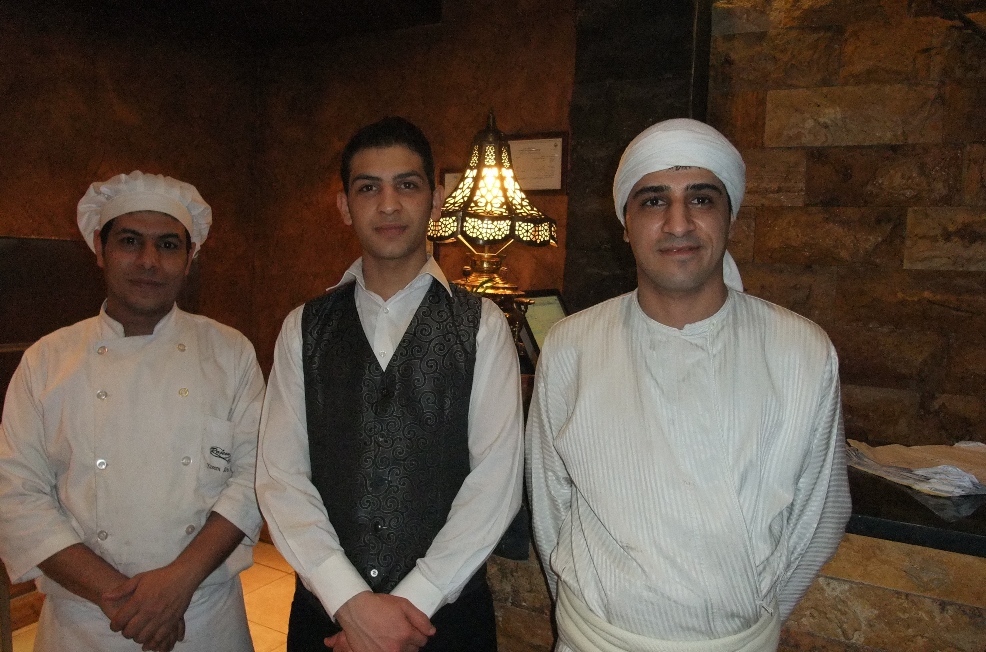 I arrived in the capital, Amman, after around 3 hour’s drive from Damascus in a shared taxi. The city is at an elevation of 800 metres, which meant that the evenings were a bit chilly. Amman is a much smaller city than Damascus with a population of 2.2 million and I was pleased to have more space, more quiet, and less people around me after the crowds of Damascus. The people were friendly, helpful and hospitable. Around two thirds of the population of Jordan are Palestinian or have Palestinian origin. In many cases peoples’ grandparents were born in Palestine. They live in good brotherhood with the Jordanians proper, have the same rights and have contributed a lot to the city and its development. I visited one of the districs where they live and a home of one of them in Amman*. The agenda in Amman was visiting the Citadel*, excavated ruins of a palace dating from about AD 720. It is situated on Amman's highest hill* with a great view. I also visited the restored Roman theatre in the city centre. Because our company sponsors the SOS children's village, I took a ferry to visit a SOS children’s village in the suburb of Amman* (see special photo gallery from the visit). I also had a look at the modern anjstreet* with European style shops and coffeehouses, and met with the lovely and helpful Icelandic consul in Jordan, Miss Stefania Khaleik. At the good hotel Granada, at an excellent location in Amman, I had the pleasure of being invited to a 30th birthday party. This was celebrated outdoors during daytime at the bar in the hotel* (?). Many of those attending the party, whom I had good conversations with, had a European celebrity look, not at all the look that many would expect from the stereotype of Jordanians. The womens shoes* very also quite memorable.
I arrived in the capital, Amman, after around 3 hour’s drive from Damascus in a shared taxi. The city is at an elevation of 800 metres, which meant that the evenings were a bit chilly. Amman is a much smaller city than Damascus with a population of 2.2 million and I was pleased to have more space, more quiet, and less people around me after the crowds of Damascus. The people were friendly, helpful and hospitable. Around two thirds of the population of Jordan are Palestinian or have Palestinian origin. In many cases peoples’ grandparents were born in Palestine. They live in good brotherhood with the Jordanians proper, have the same rights and have contributed a lot to the city and its development. I visited one of the districs where they live and a home of one of them in Amman*. The agenda in Amman was visiting the Citadel*, excavated ruins of a palace dating from about AD 720. It is situated on Amman's highest hill* with a great view. I also visited the restored Roman theatre in the city centre. Because our company sponsors the SOS children's village, I took a ferry to visit a SOS children’s village in the suburb of Amman* (see special photo gallery from the visit). I also had a look at the modern anjstreet* with European style shops and coffeehouses, and met with the lovely and helpful Icelandic consul in Jordan, Miss Stefania Khaleik. At the good hotel Granada, at an excellent location in Amman, I had the pleasure of being invited to a 30th birthday party. This was celebrated outdoors during daytime at the bar in the hotel* (?). Many of those attending the party, whom I had good conversations with, had a European celebrity look, not at all the look that many would expect from the stereotype of Jordanians. The womens shoes* very also quite memorable.
Restaurant:
Old Street restaurant, good food, service and surroundings.
Middle East in 2011
Back  Print
Print 



 Print
Print 










